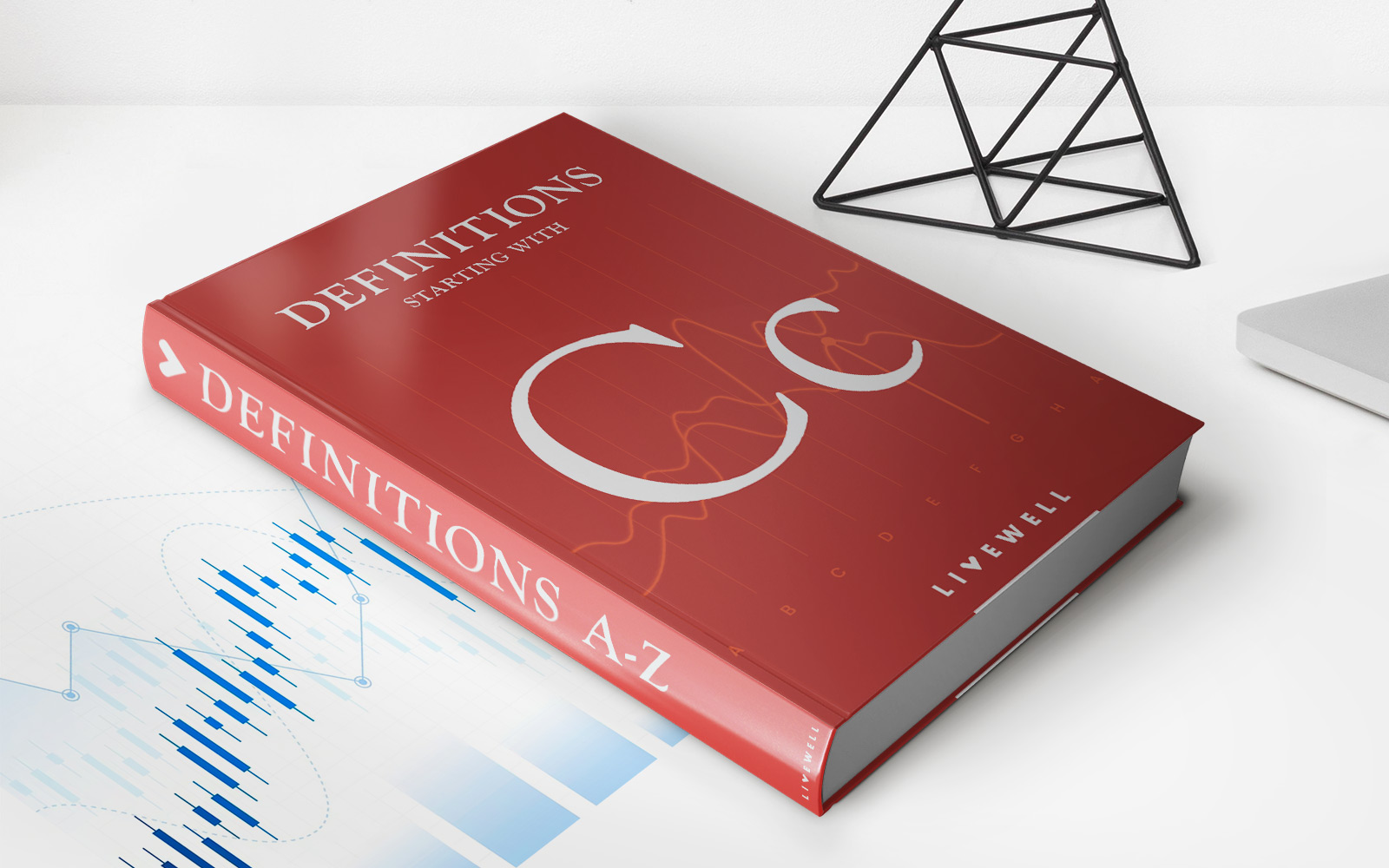Home>Finance>What Are Major Differences Between Life Insurance And Annuities


Finance
What Are Major Differences Between Life Insurance And Annuities
Modified: February 21, 2024
Discover the key distinctions between life insurance and annuities in the world of finance. Gain insights into their unique features and benefits.
(Many of the links in this article redirect to a specific reviewed product. Your purchase of these products through affiliate links helps to generate commission for LiveWell, at no extra cost. Learn more)
Table of Contents
- Introduction
- Purpose of the Article
- Definition of Life Insurance
- Definition of Annuities
- Key Differences between Life Insurance and Annuities
- Purpose and Function
- Accumulation and Distribution of Funds
- Risk and Return
- Tax Treatment
- Flexibility and Control
- Beneficiary Designation
- Premiums and Payments
- Estate Planning Considerations
- Conclusion
Introduction
Welcome to the world of finance, where decisions about our money have a profound impact on our lives. When it comes to planning for the future, two popular options often come into play: life insurance and annuities. Whether you’re starting a family, preparing for retirement, or simply looking to protect and grow your assets, understanding the differences between these two financial tools is crucial.
In this article, we will explore the major differences between life insurance and annuities. We’ll delve into their definitions, purposes, functions, risk factors, tax treatments, flexibility, beneficiary designations, premiums, and how they factor into estate planning considerations. By the end, you will have a clear understanding of the unique features of these financial products and be better equipped to make informed decisions about your financial future.
Before we dive into the specifics, it’s important to note that both life insurance and annuities serve important purposes in personal financial planning. Life insurance provides financial protection for your loved ones in the event of your untimely death, ensuring they are taken care of and helping to cover expenses such as funeral costs, outstanding debts, and income replacement. Annuities, on the other hand, are vehicles designed to accumulate funds for retirement and provide a consistent stream of income during your golden years.
Now that we have a brief overview, let’s define each of these financial tools in more detail and explore their key differences.
Purpose of the Article
The purpose of this article is to provide a comprehensive understanding of the major differences between life insurance and annuities. By exploring their definitions, functions, and various features, readers will gain clarity on the unique purposes and benefits these financial products offer.
Understanding the differences between life insurance and annuities is crucial for making informed decisions about one’s financial goals and priorities. Whether it’s safeguarding the financial well-being of loved ones or planning for a secure retirement, choosing the right financial tool is essential.
Moreover, this article aims to debunk any misconceptions or confusion surrounding life insurance and annuities. There are many misconceptions about these products, and it is important to have accurate information to make informed choices. By clarifying the purpose and function of both life insurance and annuities, readers will be empowered to better navigate the complex world of personal finance.
By highlighting the major differences between life insurance and annuities, readers will be equipped to evaluate their unique needs and financial objectives. This article will serve as a guide to help readers make sound financial decisions that align with their goals.
Additionally, this article aims to shed light on the importance of considering both life insurance and annuities as part of a comprehensive financial plan. While they serve different functions, the combination of both can provide a well-rounded approach to financial protection, growth, and stability.
Overall, the purpose of this article is to inform and educate readers about the distinct characteristics and benefits of life insurance and annuities, enabling them to make informed financial decisions that align with their unique needs and circumstances.
Definition of Life Insurance
Life insurance is a contract between an individual (the policyholder) and an insurance company. It is designed to provide financial protection to the policyholder’s beneficiaries in the event of their death. The policyholder pays regular premiums to the insurance company, and in return, the insurance company agrees to pay a death benefit to the designated beneficiaries upon the policyholder’s passing.
Life insurance policies come in various forms, including term life insurance and permanent life insurance. Term life insurance provides coverage for a specific term, such as 10, 20, or 30 years. If the policyholder passes away during the term, the death benefit is paid out to the beneficiaries. Permanent life insurance, on the other hand, provides coverage for the entire lifetime of the policyholder, as long as the premiums are paid. Permanent life insurance policies also have a cash value component that grows over time, allowing the policyholder to access funds if needed.
The primary purpose of life insurance is to financially protect loved ones in the event of the policyholder’s death. It offers peace of mind by ensuring that beneficiaries are taken care of and can cover expenses such as funeral costs, outstanding debts, and ongoing living expenses. Life insurance can also be used as an estate planning tool, allowing policyholders to leave a legacy or provide for charitable causes.
Life insurance policies are customizable to suit individual needs and can be tailored based on factors such as age, health, lifestyle, and financial goals. The premiums for life insurance policies are typically determined based on the individual’s age, gender, health history, and coverage amount.
In summary, life insurance is a contractual agreement that provides financial protection to beneficiaries in the event of the policyholder’s death. It offers peace of mind, ensuring that loved ones are taken care of and providing a safety net during challenging times.
Definition of Annuities
Annuities, on the other hand, are financial products typically offered by insurance companies. They are designed to provide a steady stream of income during retirement. Annuities work by the policyholder making either a lump sum contribution or a series of regular payments into the annuity contract. In return, the insurance company promises to provide periodic payments to the policyholder, either for a specified period or for the remainder of their life.
There are several types of annuities, including fixed annuities, variable annuities, and indexed annuities. In a fixed annuity, the insurance company guarantees a specific interest rate on the contributions made, providing a predictable and stable income stream. Variable annuities, on the other hand, allow the policyholder to invest in various investment funds, such as stocks and bonds, with the potential for higher returns but also higher risk. Indexed annuities are linked to the performance of a specific market index, offering a balance between potential growth and protection against market downturns.
One key advantage of annuities is their tax-deferred growth. The earnings within an annuity grow tax-free until withdrawals are made, providing an opportunity for compound growth. However, withdrawals made before the age of 59 ½ may be subject to a 10% penalty in addition to ordinary income taxes.
Another notable feature of annuities is their ability to provide a guaranteed income stream for life, addressing the concern of outliving one’s savings. This makes annuities a popular choice for individuals looking to secure a stable income during retirement.
Annuities can also be customized with various optional features, such as death benefit provisions or riders that offer protection against inflation or long-term care expenses. These additional features, however, typically come with added costs.
It’s important to note that annuities may have surrender charges or fees for early withdrawal, and their complexity requires careful consideration and understanding of the terms, fees, and potential risks involved.
In summary, annuities are financial products that offer a steady stream of income during retirement. They provide options for growth, income guarantees, and tax advantages. Annuities can be personalized to fit an individual’s risk tolerance, financial goals, and retirement needs.
Key Differences between Life Insurance and Annuities
While both life insurance and annuities are financial products designed to provide financial security, there are several key differences between the two. Understanding these differences is essential for making informed decisions about which product aligns with your financial goals. Let’s explore the major distinctions between life insurance and annuities:
- Purpose and Function: Life insurance aims to provide financial protection for loved ones in the event of the policyholder’s death. It offers a death benefit to beneficiaries, which can be used for funeral expenses, outstanding debts, and ongoing living expenses. On the other hand, annuities are designed to provide a steady stream of income during retirement. They offer a way to supplement one’s retirement savings and ensure a consistent income flow.
- Accumulation and Distribution of Funds: Life insurance is typically a product where the policyholder pays regular premiums, and the beneficiaries receive a lump sum payment upon the policyholder’s death. Annuities, on the other hand, involve the accumulation of funds over time either through a lump sum contribution or regular payments. The accumulated funds are then distributed periodically, either for a specified duration or for the lifetime of the policyholder.
- Risk and Return: Life insurance is primarily focused on providing a death benefit and is not directly linked to investment returns. The premiums paid for life insurance primarily cover the risk of death. Annuities, on the other hand, can be tied to investment performance. Variable annuities, for example, offer the potential for higher returns but also come with higher risk compared to fixed annuities.
- Tax Treatment: There are different tax considerations for life insurance and annuities. The death benefit received from a life insurance policy is generally income tax-free for the beneficiaries. The cash value component of permanent life insurance policies can also grow tax-deferred. Annuities, on the other hand, offer tax-deferred growth, meaning the earnings within the annuity accumulate tax-free until withdrawals are made. However, withdrawals from annuities may be subject to ordinary income tax.
- Flexibility and Control: Life insurance policies typically have limited flexibility in terms of modifying coverage or accessing funds. Once a policy is in place, changes can be difficult and may require additional underwriting. Annuities, however, can offer more flexibility. They may allow for changes in contribution amounts, investment options, and the ability to access funds. However, early withdrawals from annuities may come with surrender charges or fees.
- Beneficiary Designation: In life insurance, the policyholder designates beneficiaries who will receive the death benefit upon their passing. Annuities also allow for beneficiary designations, but the primary focus is on providing income to the policyholder during retirement. If the annuity holder passes away, the remaining value of the annuity may be distributed to the designated beneficiary.
- Premiums and Payments: Life insurance requires regular premium payments to keep the policy in force. The premiums are typically determined based on factors such as age, health, and coverage amount. Annuities, on the other hand, involve either a lump sum contribution or a series of payments. The amount of the contributions and the frequency of payments can vary depending on the type of annuity and the individual’s financial situation.
- Estate Planning Considerations: Life insurance can be utilized as an estate planning tool to provide a financial legacy for loved ones or to cover estate taxes. Annuities, however, may have different considerations when it comes to estate planning. Depending on how the annuity is structured, the remaining value may be passed on to beneficiaries, but it may also be subject to taxes and potential probate.
Understanding these key differences between life insurance and annuities is crucial for making informed decisions about your financial future. Assessing your specific needs, goals, and financial situation will help guide you in choosing the right product to meet your individual requirements.
Purpose and Function
The purpose and function of life insurance and annuities differ significantly. Understanding these distinctions is crucial in determining which financial product aligns with your specific needs and goals.
Life Insurance: The primary purpose of life insurance is to provide financial protection for your loved ones in the event of your untimely death. It offers a safety net to ensure that your beneficiaries are taken care of and can cover expenses such as funeral costs, outstanding debts, and ongoing living expenses. Life insurance policies provide a death benefit, which is a lump sum payment made to the designated beneficiaries upon the policyholder’s passing. This financial protection allows your loved ones to maintain their lifestyle and financial stability during a difficult time.
Life insurance also serves as an important tool for estate planning. It enables you to leave a financial legacy for your beneficiaries, whether it’s providing financial support for education, contributing to charitable causes, or ensuring a smooth transition of assets.
Annuities: Annuities, on the other hand, are designed to provide a steady stream of income during retirement. Their purpose is to ensure a consistent income flow that can supplement your other retirement savings. Annuities address the concern of outliving your savings by providing a guaranteed income for either a specified duration or the remainder of your life. This can give you peace of mind and financial security during your golden years.
By contributing to an annuity, you are effectively accumulating funds over time. This can be done through a lump sum payment or through regular contributions. The accumulated funds grow on a tax-deferred basis, meaning you do not pay taxes on the growth until you make withdrawals.
Annuities are particularly appealing to individuals who want to have a predictable and reliable source of income during retirement. They can help cover essential expenses, maintain a comfortable lifestyle, and provide a measure of financial stability throughout your retirement years.
Overall, the purpose of life insurance is to protect your loved ones and provide financial support in the event of your death, while annuities focus on providing a consistent stream of income during retirement. Assessing your specific financial goals, risk tolerance, and personal circumstances will help you determine which product is most suitable for you.
Accumulation and Distribution of Funds
When it comes to the accumulation and distribution of funds, life insurance and annuities operate in distinct ways. Understanding these differences is essential in determining which financial product aligns with your specific financial goals and needs.
Accumulation of Funds:
In life insurance, the accumulation of funds is typically not a primary focus. Premiums paid by the policyholder are used to cover the risk of death and to build the cash value component of permanent life insurance policies. This cash value grows over time, allowing the policyholder to access funds through policy loans or withdrawals if needed. However, the primary purpose of life insurance is to provide a death benefit to beneficiaries in the event of the policyholder’s passing.
Annuities, on the other hand, are specifically designed to accumulate funds over time. This accumulation is done through a lump sum contribution or regular payments made by the annuity holder. The accumulated funds within the annuity grow on a tax-deferred basis, meaning the earnings are not subject to immediate taxation. The growth of the funds within the annuity is influenced by factors such as the type of annuity, the performance of the underlying investments (in the case of variable annuities), and any applicable fees or charges.
Distribution of Funds:
Life insurance policies primarily distribute funds in the form of a death benefit. In the event of the policyholder’s death, the designated beneficiaries receive a lump sum payment. This death benefit is typically tax-free to the beneficiaries and can provide financial support to cover funeral expenses, outstanding debts, and ongoing living expenses.
Annuities, on the other hand, provide a steady stream of income during retirement. The distribution of funds from an annuity can be customized based on the individual’s needs and preferences. Annuities can offer a guaranteed income for a specific duration, such as a certain number of years, or for the remainder of the annuity holder’s life. The frequency and amount of the payments can vary depending on factors such as the type of annuity, the annuitant’s age, and any optional features or riders selected. The income received from an annuity is taxable as ordinary income at the time of distribution.
In summary, the accumulation and distribution of funds differ between life insurance and annuities. Life insurance primarily focuses on the accumulation of a death benefit to provide a financial safety net for beneficiaries, while annuities are designed to accumulate funds over time and provide a steady stream of income during retirement. Evaluating your long-term financial goals and preferences will help you determine which approach aligns best with your needs.
Risk and Return
When considering financial products like life insurance and annuities, understanding the risk and return factors is crucial. The differences in risk profiles and potential returns can significantly impact your financial planning and decision-making process.
Risk:
In terms of risk, life insurance policies provide a predetermined death benefit to beneficiaries in the event of the policyholder’s passing. The risk lies in the possibility of the policyholder’s premature death, which triggers the payout to beneficiaries. The premiums paid by the policyholder are primarily based on factors such as age, health, lifestyle, and coverage amount. The risk for the policyholder is in paying premiums without personally benefiting from the policy if they outlive the policy term.
Annuities, on the other hand, carry different risk characteristics. The risk in annuities is associated with the performance of the underlying investment options, especially in the case of variable annuities. The investment options within the annuity can include stocks, bonds, mutual funds, or other financial instruments. The potential return and risk depend on how the underlying investments perform. This means that the annuitant may be exposed to market volatility and fluctuations. Fixed annuities offer a more stable and predictable return as they guarantee a specified interest rate.
Return:
The return on life insurance policies is primarily in the form of the death benefit paid out to beneficiaries upon the policyholder’s death. Life insurance is not typically viewed as an investment vehicle for generating high returns. However, permanent life insurance policies accumulate a cash value component over time. The cash value can grow tax-deferred and may be accessed through policy loans or withdrawals, providing a source of potential liquidity.
Annuities, on the other hand, offer the potential for growth and returns based on the performance of the underlying investments. Variable annuities allow the annuitant to invest in a range of options, potentially yielding higher returns but also exposing them to market risk. Fixed annuities provide a guaranteed interest rate set by the insurance company, offering a more stable and predictable return. Indexed annuities are linked to the performance of a specific market index, providing the opportunity for growth tied to market movements.
It’s important to note that both life insurance and annuities carry costs in the form of premiums or fees. These costs can impact the potential return on investment. Understanding the risk and return characteristics of each product and assessing your risk tolerance and financial goals are essential in determining the most appropriate choice for your needs.
In summary, life insurance offers a predetermined death benefit with a focus on financial protection, while annuities provide the potential for growth and income based on investment performance. Evaluating your risk tolerance, investment objectives, and long-term financial goals will help guide your decision between these two financial products.
Tax Treatment
Tax treatment is an important consideration when comparing life insurance and annuities. The tax implications for each product can have a significant impact on your financial planning and overall returns.
Life Insurance:
In general, the death benefit received from a life insurance policy is tax-free for the beneficiaries. This means that the beneficiaries do not have to include the death benefit as taxable income when they receive the payout. The tax-free nature of the death benefit is one of the key advantages of life insurance, as it provides a financial safety net for loved ones without creating a tax burden. It ensures that the funds can be used to cover funeral expenses, outstanding debts, and ongoing living expenses without diminishing the intended financial support.
In addition, permanent life insurance policies, such as whole life or universal life, have a cash value component. The cash value grows over time on a tax-deferred basis, meaning that the growth is not subject to immediate taxation. However, if the policyholder surrenders the policy or makes a withdrawal, any gains above the premiums paid may be subject to taxes.
Annuities:
The tax treatment of annuities differs from that of life insurance policies. Annuities offer tax-deferred growth, meaning that the earnings within the annuity accumulate tax-free until withdrawals are made. This tax advantage allows the funds to grow more rapidly than they would in a taxable investment account. Taxes are only paid when withdrawals are made from the annuity, at which point the withdrawal amount is subject to ordinary income tax.
It’s important to note that if withdrawals from an annuity are made before the age of 59 ½, they may be subject to a 10% early withdrawal penalty in addition to ordinary income taxes. However, there are some exceptions to the penalty for certain qualified distributions, such as for disability or long-term care needs.
Annuity beneficiaries may also have different tax implications depending on whether they receive a lump sum payout or periodic payments. In general, when beneficiaries receive a lump sum, the portion that represents investment gains may be subject to income tax. If they choose to receive periodic payments, the tax treatment will depend on whether the annuity was purchased with pre-tax or after-tax dollars.
It’s important to consult with a tax advisor or financial professional to fully understand the tax implications of life insurance and annuities based on your specific circumstances. They can provide guidance tailored to your tax situation and help you make informed decisions about managing tax obligations.
In summary, life insurance policies generally offer tax-free death benefits for beneficiaries, while annuities provide tax-deferred growth and taxable withdrawals for the annuitant. Understanding the different tax treatments can play a significant role in your financial planning and overall returns.
Flexibility and Control
Flexibility and control are important factors to consider when comparing life insurance and annuities. These factors can impact how you manage your financial resources and make adjustments according to your changing needs and circumstances.
Life Insurance:
Life insurance policies generally offer limited flexibility and control once the policy is in force. The coverage amount, premium payments, and other policy terms are typically set at the time of purchase. Since the primary purpose of life insurance is to provide a death benefit to beneficiaries, altering the policy terms can be challenging, requiring additional underwriting and potentially higher premiums.
However, there is some flexibility within permanent life insurance policies, such as whole life or universal life. These policies often have a cash value component that accumulates over time. Policyholders may be able to access the accumulated funds through policy loans or withdrawals, providing a level of flexibility in managing unexpected expenses or planned financial goals. It’s important to note that accessing the cash value may impact the death benefit and have tax implications.
Annuities:
Annuities offer more flexibility and control compared to life insurance policies. Annuity holders typically have the ability to make changes to their contributions, investment options, and withdrawal strategies. This allows for greater customization of the annuity to align with changing financial needs and goals.
If you have a deferred annuity, you can often adjust the amount and frequency of your contributions within the limits set by the annuity contract. This flexibility can be helpful if you want to increase or decrease your contributions based on your financial situation or retirement goals.
Variable annuities offer even greater control as they allow annuitants to choose from a variety of investment options. This enables you to tailor the annuity to align with your risk tolerance and investment preferences. You can adjust your asset allocation or switch between investment options within the annuity over time, giving you the flexibility to adapt to market conditions or personal investment strategies.
It’s important to note that annuities may come with surrender charges or fees for making changes or withdrawing funds before a specified period. These charges are often tiered, decreasing over time, incentivizing a longer-term commitment to the annuity. Understanding the flexibility and associated costs of the annuity contract is crucial in making informed decisions about managing your funds.
In summary, life insurance policies offer limited flexibility, with the primary focus on providing a predetermined death benefit. Annuities, on the other hand, offer more flexibility and control, allowing for adjustments in contributions, investment options, and withdrawal strategies to align with changing financial needs and objectives.
Beneficiary Designation
Beneficiary designation is an important aspect to consider when comparing life insurance and annuities. It determines who will receive the financial benefits associated with the policy or contract. Understanding the beneficiary designation process and its implications is crucial in ensuring that your financial assets are distributed according to your wishes.
Life Insurance:
In life insurance policies, the policyholder has the ability to designate one or multiple beneficiaries who will receive the death benefit upon their passing. The policyholder can specify the percentage of the death benefit each beneficiary will receive or designate primary and contingent beneficiaries. Primary beneficiaries are the first in line to receive the death benefit, while contingent beneficiaries will receive the benefit if the primary beneficiaries predecease the policyholder.
Beneficiary designations are typically revocable, meaning they can be changed at any time during the policyholder’s life. This provides flexibility in adjusting beneficiaries based on changes in personal circumstances, such as births, marriages, or divorces. However, it’s essential to review and update beneficiary designations regularly to ensure they reflect your current wishes.
In addition, life insurance policies can provide options for different types of beneficiary designations. For example, a policyholder can choose to have the death benefit paid directly to the beneficiaries or have it paid to a trust or estate for further distribution. This allows for customization and consideration of specific estate planning goals.
Annuities:
Annuities also offer the ability to designate beneficiaries to receive the remaining value of the annuity upon the annuity holder’s passing. The annuity holder can designate primary and contingent beneficiaries and specify the percentage or share of the annuity that each beneficiary is entitled to. The beneficiary designation can be revocable, allowing for changes during the annuity holder’s lifetime.
One important distinction with annuities is that the primary focus is on providing income to the annuity holder during retirement. If the annuity holder passes away before exhausting the annuity contract, the remaining value may be distributed to the designated beneficiaries, subject to the terms and conditions of the annuity contract.
It’s important to review and update the beneficiary designation for annuities, just as with life insurance, to ensure it aligns with your current wishes and any changes in your family or personal circumstances.
Consulting with an attorney or estate planning professional is recommended when considering beneficiary designations for both life insurance and annuities. They can provide guidance on ensuring your designations are consistent with your estate planning goals and overall financial strategy.
In summary, both life insurance and annuities allow for beneficiary designations to ensure the distribution of financial benefits according to your wishes. Regularly reviewing and updating these designations is important to reflect changes in personal circumstances and estate planning goals.
Premiums and Payments
When comparing life insurance and annuities, understanding the differences in premiums and payment structures is crucial. The way premiums are determined and paid can impact the affordability, flexibility, and overall cost of the financial product.
Life Insurance:
In life insurance, premiums are the regular payments made by the policyholder to keep the policy in force. The amount of the premiums is typically determined at the time of policy issuance and is based on various factors such as the age, gender, health history, lifestyle, and coverage amount of the insured individual.
Premium payments for life insurance policies can be structured in different ways, depending on the policy type:
- Level Premiums: With level premium policies, the premium amount remains the same throughout the duration of the policy term. This provides predictability and stability in terms of budgeting for insurance expenses.
- Term Premiums: Term life insurance policies typically have lower initial premiums compared to permanent life insurance. However, the premium amount may increase at the end of each term or upon renewal.
- Flexible Premiums: Some permanent life insurance policies allow for more flexibility in premium payments. Policyholders may have the option to adjust the premium amount within certain limits or make additional payments beyond the required minimum premium.
It’s important to pay premiums on time to ensure that a life insurance policy remains active and provides the intended financial protection. Failure to pay premiums could result in the policy lapsing or losing coverage.
Annuities:
With annuities, the payment structure is different from life insurance. Instead of regular premium payments, annuities involve either a lump sum contribution or a series of payments made by the annuity holder.
For immediate annuities, a single lump sum payment is made by the annuity holder, and the annuity payments begin immediately. This structure is often chosen by individuals who have accumulated a significant amount of money for retirement and want to convert it into a consistent income stream.
For deferred annuities, regular payments are made by the annuity holder over a specific period. These payments can be made monthly, quarterly, annually, or according to a customized schedule. Deferred annuities allow individuals to contribute over time and gradually build their retirement savings.
The amount and frequency of annuity payments can be customized based on the annuity contract and the preferences of the annuity holder. This flexibility allows individuals to align payments with their financial capabilities and retirement goals.
It’s important to note that annuities may come with surrender charges or fees for early withdrawals or changes to the payment schedule. Understanding the payment structure and associated costs is essential in managing annuity contracts effectively.
In summary, life insurance premiums are regular payments made to keep the policy in force, and the amount is typically determined based on factors such as age, health, and coverage amount. Annuity payments, on the other hand, involve either a lump sum contribution or a series of payments made by the annuity holder to accumulate funds for retirement. Understanding the payment structure and associated costs is important in managing both life insurance and annuity contracts effectively.
Estate Planning Considerations
Estate planning considerations are an important factor when comparing life insurance and annuities. Both products can play essential roles in ensuring that your assets are distributed according to your wishes and maximizing the financial benefits for your loved ones.
Life Insurance:
Life insurance can be a valuable tool in estate planning. It allows you to provide a financial legacy for your beneficiaries by designating them as the recipients of the death benefit. The death benefit from a life insurance policy typically passes directly to the named beneficiaries outside of the probate process. This means that the funds can be disbursed quickly and without being subject to probate fees or delays.
By strategically utilizing life insurance policies, you can plan for the financial needs of your loved ones, cover outstanding debts, and provide income replacement. This can help ensure the financial stability of your family and alleviate potential financial burdens during a challenging time.
Additionally, life insurance policies can be used for estate planning purposes beyond personal coverage. High net worth individuals may utilize life insurance trusts to mitigate estate taxes. By placing the life insurance policy within an irrevocable trust, the death benefit can be excluded from the insured’s estate, potentially reducing the overall estate tax liability.
Annuities:
Annuities also have considerations in estate planning, although they differ from life insurance policies. Annuities are primarily geared towards providing income during retirement, but they can still play a role in estate planning strategies.
If the annuity holder passes away before exhausting the annuity, the remaining value of the annuity can be passed on to designated beneficiaries. The beneficiary designation allows for the continuation of the annuity contract or the distribution of the remaining value according to the annuity terms and conditions.
However, it’s important to note that the remaining value of the annuity may be subject to taxation and potential probate. Depending on how the annuity is structured and the timing of the annuitant’s passing, there may be tax implications for the beneficiaries upon receipt of the funds. Consulting with an estate planning professional or attorney is recommended to ensure that annuities are aligned with your overall estate planning goals.
Strategically utilizing both life insurance and annuities in estate planning can provide a comprehensive approach to preserving and distributing your assets. It’s crucial to assess your financial objectives, tax considerations, and the unique circumstances of your estate to determine the most effective combination of financial tools.
In summary, both life insurance and annuities can contribute to your estate planning strategy. Life insurance policies provide a tax-free death benefit that can pass directly to beneficiaries and assist in covering financial obligations. Annuities, while primarily focused on retirement income, can still be included in estate planning by considering their distribution in the event of the annuity holder’s passing. Consulting with professionals in the field can ensure that your estate planning meets your specific needs and goals.
Conclusion
In conclusion, understanding the major differences between life insurance and annuities is essential for making informed decisions about your financial future. While both products serve important purposes in personal finance, they have distinct features and functions that cater to different needs and objectives.
Life insurance is primarily focused on providing financial protection for loved ones in the event of the policyholder’s death. It offers a death benefit that can cover expenses such as funeral costs, outstanding debts, and ongoing living expenses. Life insurance can also be utilized as an estate planning tool, ensuring the financial security and support of beneficiaries.
Annuities, on the other hand, are designed to provide a steady stream of income during retirement. They offer a way to supplement other retirement savings and ensure a consistent income flow. Annuities can provide financial stability and peace of mind during the golden years, addressing the concern of outliving one’s savings.
Throughout this article, we have explored key differences between life insurance and annuities, including their purpose, accumulation and distribution of funds, risk and return characteristics, tax treatment, flexibility and control, beneficiary designations, premiums and payments, and estate planning considerations.
It’s important to assess your individual needs, financial goals, and risk tolerance to determine which product aligns best with your circumstances. Some individuals may find that having both life insurance and annuities as part of their financial plan provides a comprehensive approach to financial protection and retirement income.
Remember, before making any decisions, consult with financial professionals, such as insurance agents, financial advisors, or estate planning attorneys. They can provide personalized guidance based on your specific situation and help you make informed choices that align with your financial goals.
Ultimately, whether you choose life insurance, annuities, or a combination of both, these financial products can play significant roles in securing your financial future and providing peace of mind for yourself and your loved ones.














